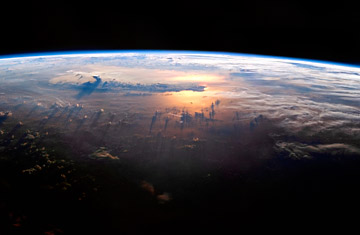
The Pacific Ocean seen from space — a cozy spot for extraterrestrial microbes to land. Image from Michael Benson's new book, 'Planetfall.'
(4 of 4)
"At this point," says Princeton astrophysicist Edward Belbruno, one of the co-authors, "mere randomness determines whether it gets out or not." And never mind the extreme distances to the nearest solar systems. About 4.5 billion years ago, the infant sun was part of a tight grouping of nascent stars known as the local cluster. The herd dispersed after less than 300 million years, but a weak-transfer rock that escaped within that window could have reached the next solar system in about a million years. "Trillions of rocks could escape a solar system," says Belbruno. "Over the course of 300 million years, about 3 billion might have struck Earth."
It's impossible to know if even one of those 3 billion would have harbored biological material, especially so early in the history of the local stars. But if the new studies say anything, it's that it's equally impossible to continue to see the Earth and its organisms as somehow separate from the rest of the cosmos. The building blocks of biology are everywhere; life, it seems increasingly likely, could be too.
